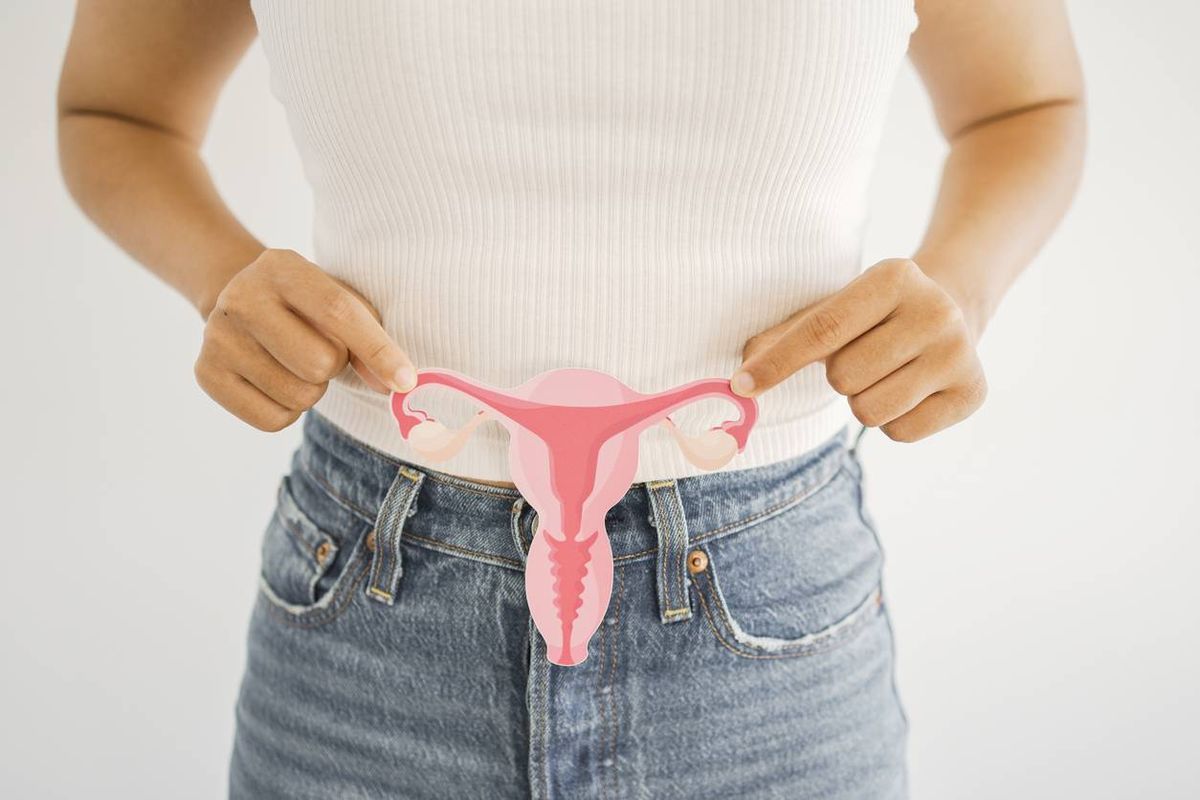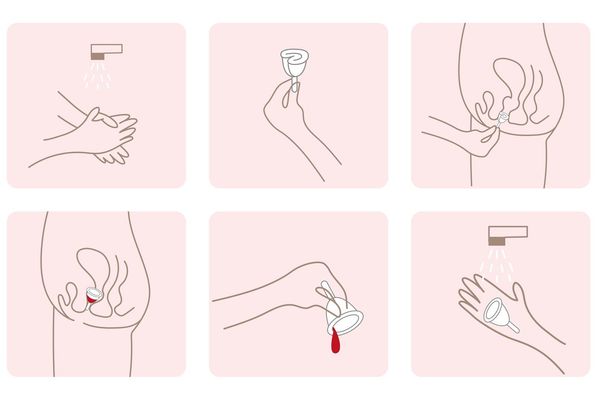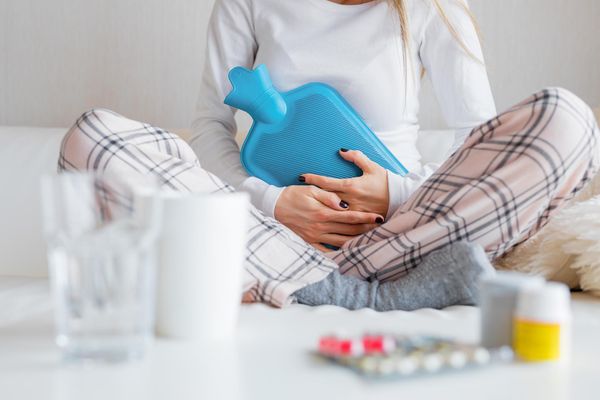Menstrual cramps and heavy bleeding are often seen as “just part of having a period,” but they can also be signs that something’s not quite right with your uterine health.
If you’re having a lot of pain or heavy bleeding, it could point to a health problem that needs care — not something to suffer with in silence.
Knowing what’s normal and what’s not can help you take better care of your uterus and overall reproductive health.
Here are 10 signs that point to good uterine health, and what it could mean if you experience something out of the ordinary.
1. Your period arrives on schedule
Your menstrual cycle starts on the first day of your period and continues until the first day of your next period. Typically, a period occurs every 28 days. But it can also happen every 21 days or up to 35 days, all of which can be normal if it’s normal for you.
Irregular periods or abnormal periods — such as cycles that start unpredictably, skip months, or occur more than once in your usual cycle — could happen because of breastfeeding or perimenopause. However, they may also be signs of conditions like polycystic ovary syndrome (PCOS), pelvic inflammatory disease (PID) or uterine fibroids, which require medical attention.
2. Your period lasts between two and seven days

iStock.com/stefanamer
A period usually lasts between two and seven days. If you bleed longer than seven days, you might have menorrhagia, or heavy menstrual bleeding. While menorrhagia is common, it can be linked to PCOS, fibroids, sexually transmitted infections (STIs) and even certain medications. Bleeding for less than two days could be a result of pregnancy, perimenopause, birth control or certain lifestyle factors. It can also be linked to medical conditions such as PCOS or thyroid disease. If you notice bleeding that’s shorter or longer than normal, visit your healthcare provider (HCP).
3. Your flow is steady
A healthy menstrual flow means that your period follows a predictable pattern without major changes in volume or duration. It may be heavier during the first day or two, but it slowly tapers off. You shouldn’t be soaking through a tampon or pad every hour or needing to double up on protection.
4. You don’t pass a lot of large clots
It’s normal to pass small blood clots during your heaviest days — usually around the size of a dime or quarter. However, if you’re regularly passing clots larger than a quarter, and if they are alongside heavy bleeding, it could indicate a health issue.
Large blood clots can be a sign of thyroid disorders, uterine polyps, fibroids, bleeding disorders or, in rare cases, uterine or cervical cancer. If this sounds familiar, it’s worth sharing with your HCP.
5. Your menstrual cramps are manageable and short-lived
Cramps are to be expected during your period, especially on the first couple of days. These mild to moderate aches in the lower abdomen or back are usually manageable with heating pads or over-the-counter pain relievers, such as ibuprofen (Advil) or acetaminophen (Tylenol).
What’s not normal is cramping so severe it gets in the way of your day. This level of pain — known as dysmenorrhea (painful cramps) — can last several days and cause sharp and throbbing pain. It may also come with nausea, dizziness or headaches. Dysmenorrhea can often be treated, so be sure to let your HCP know if you think your cramps are more painful than they should be.
6. You don’t experience pain outside your period

iStock.com/PeopleImages
It’s normal to have cramps during the first day or two of your period, but pain that sticks around after your period ends could be a red flag. Persistent or off-cycle pelvic pain may be secondary dysmenorrhea, meaning that it’s caused by an underlying health condition, such as endometriosis, adenomyosis or uterine fibroids, among other things.
7. You don’t bleed between periods
Light spotting right before your period starts is completely normal. But bleeding that occurs between cycles isn’t typical and could be a sign of abnormal uterine bleeding (or menometorrhagia). This kind of bleeding may be caused by hormonal imbalances, fibroids, medications or, rarely, cancer.
8. You don’t feel dizzy, faint or out of breath during your period

iStock.com/Igor Suka
It’s okay to be a little tired or more sluggish during your period, but it shouldn’t leave you dizzy, faint or gasping for air. These symptoms could indicate anemia — often related to heavy bleeding — or other conditions like dysmenorrhea, premenstrual dysphoric disorder (PMDD) or low blood pressure.
Some people may also experience shortness of breath due to a rare condition called catamenial pneumothorax. It occurs when air gets into the space between your lungs and the inside of your chest before or after the start of your period.
If you experience lightheadedness or shortness of breath during your cycle, contact your HCP or seek immediate care.
9. You don’t run a fever during your period
Your body temperature naturally fluctuates during your cycle due to hormonal changes — especially around ovulation. Some people experience what’s known as “period flu,” a type of premenstrual syndrome (PMS) that can cause flu-like symptoms, including body aches, diarrhea, headaches, fatigue and even a low-grade fever. These symptoms are typically manageable with rest and over-the-counter medications.
But a true fever — 100.4 degrees Fahrenheit or higher — is a major red flag. It could be a sign of toxic shock syndrome (TSS), pelvic inflammatory disease (PID) or urinary tract infection (UTI).
If you develop a fever alongside pelvic pain or just feel generally unwell, reach out to your HCP.
10. Your period doesn’t interfere with daily life
Mild to moderate cramping and bleeding may be uncomfortable, but they typically won’t affect your daily life. But if your period often keeps you away from school, work or other responsibilities due to intense pain, heavy bleeding or exhaustion, that's not something to dismiss.
Disruptive periods could be a sign of PMDD or uterine conditions like endometriosis or fibroids.
Periods shouldn’t cramp your style
Periods shouldn’t have to be something you feel the need to push through. Paying attention to the signs your body gives is a great way to protect your uterine health — and overall well-being.
If any of these signs of normal uterine health don’t seem like your norm, be sure to talk to your HCP.
This educational resource was created with support from Sumitomo Pharma America, Inc., a HealthyWomen Corporate Advisory Council member.
- All About Periods ›
- Iron Deficiency Anemia and Heavy Periods: What’s the Connection? ›
- What You Need to Know About Heavy Menstrual Bleeding ›
- Fast Facts: What You Always Wanted to Know About Your Menstrual ... ›
- Clinically Speaking: Questions to Ask Your Healthcare Provider About Periods ›







